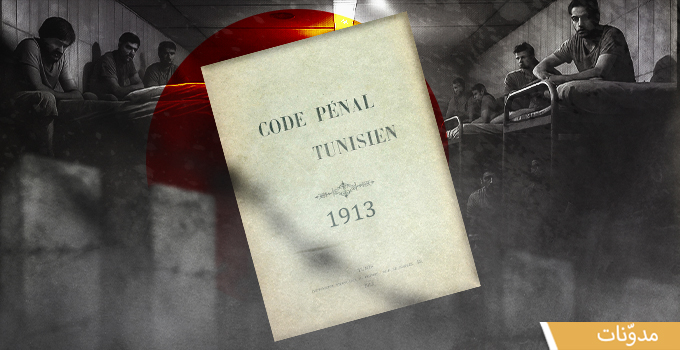
The same day, Prime Minister Hichem Mechichi dismissed the governor of Kasserine in addition to the head of the Sbeitla delegation [mu’tamdiyya] and two local security officials, including the head of municipal police in Sbeitla, who was detained by a court decision following the opening of an investigation for premediated murder. The tragic event led to confusion about whether the municipal police was under the authority of the municipality or the governorate and whether any reform was possible for municipal police forces.
Municipalities’ Lack of Authority
The statements from municipal officials in Sbeitla indicate that, while the municipality took the decision to demolish the buildings, it was unaware of the actual timing and the manner of enforcement undertaken by the municipal police. According to the Law no. 59 of August 14,2006, still regulating the relations of the municipal police force,municipalities do not supervise the municipal police force, which is under the guidance of the Ministry of Interior. While municipal councils may decide to demolish illegal buildings [Article 258 of the Code of Local Collectives], municipalities lack the authority to ensure that its decisions are enforced or executed in a manner appropriate for the community. Calls to change this and put municipalities in charge of municipal police forces has been a part of public discussion in recent years. However, such initiatives prompted swift opposition by the Municipal Police Force Staff Union. The 2018 Code of Local Collectives, the first comprehensive framework to outline how local government bodies are supposed to work, does not include any clause regarding the municipal police force, and the government has not passed the executive instructions pertaining to relations between municipalities and central authorities yet. The 2018 code discusses the “Environmental Police” as an enforcement mechanism under the control of municipalities. However, the responsibilities and enforcement powers of the Environmental Police are left ambiguous. As a result, the municipal police remain the only feasible tool that municipalities may request for enforcing regulations, such as demolishing illegal buildings.
Greater Accountability for Municipal Police Force
Having the municipal police force under the charge of the Ministry of Interior consolidates municipal police departments, and research elsewhere illustrates that this consolidation can reduce the quality of policing as evaluated by citizens. This structure not only limits the leverage of police officers over larger entities, but is also reduces the ability of citizens to influence the manners in which policing is done within their communities. During my fieldwork in Tunisia, which I undertook between May and August 2019, some council members indicated that municipalities were ineffective in closing illegal commercial areas because the areas were tied to powerful businessmen who could influence the central government authorities. Furthermore, as a result of consolidation, the municipal police loses a substantive part of its accountability to the local community, which can influence the manner in which they enforce municipal decisions, such as employing a harsh and confrontative attitude.
A suggestion to increase the accountability is putting the police force under the charge of the municipalities that are elected and subject to oversight by citizens. However, this reform also carries potential disadvantages. As political conflict has been a determining feature of local councils in Tunisia, it is possible that the relationship between municipal police and the council may get politicized. This can lead citizens to perceive the municipal police force as part of the wider clientele dynamic, further straining their relations with the municipality. Furthermore, putting police force under a political authority may not prevent big cooperation or influential statesmen from influencing it through their political connections as favoritism may become a more widespread phenomenon. Hence, bringing the authority of police force under municipalities without taking into consideration potential pitfalls can lower municipal accountability and create greater democratic deficit.
Design Principles and Municipal Police Force
A more appropriate framework could be to reform the municipal police force in light of the design principles of Elinor Ostrom, who won the Nobel Prize in Economics in 2009. Elinor Ostrom designed these principles, consisting of eight criteria, for a successful management of common-pool resources based on her decades of research.
The first principle is drafting a legal framework to clarify the boundaries of the municipal police force within the novel decentralized configuration.This entails clarifying the duties and responsibilities of the police force in light of the spirit of 2014 Constitution and 2018 Code of Local Collectives.
The second is providing a flexible legal framework that so that the community members can adjust the rules based on their local needs. For instance, the appropriate method for closing down an illegal settlement in a rural area could be different than the strategy in an urban area, and some communities may choose to enforce the rules against illegal buildings more leniently than others.
The third is ensuring that individuals affected by the rules can be a part of the discussion for modifying the rules. This involves expanding the authority of the municipal bodies over the municipal police force and ensuring that citizens can be a part of the discussion within the municipalities to decide on enforcement structures.
The fourth is developing a system for monitoring the behavior of community members, carried out by community members. This could involve creating feedback mechanisms within local councils for the municipal police force, such as appropriate commissions where citizens can interact with police force representatives to find solutions without resorting to a formal enforcement.
The fifth is making sure that the rule-making rights of community members are respected by outside authorities. The higher administrative and political authorities should respect the municipal authority for decisions regarding rule enforcement, whereas the municipal bodies should respect the limitations set by higher authorities. Central authorities should not hesitate to intervene if they perceive the local authorities as not following the legal framework.
The sixth is building responsibility for governing the common resource in nested tiers from the lowest level up to the entire interconnected system. This entails that local affairs are managed in a bottom-up manner rather than in a hierarchical one. Furthermore, if the local resolution mechanisms do not respond to citizen needs, citizens should be able to access authorities at higher level for dispute resolution.
The seventh is providing accessible, low-cost means for dispute resolution, and the eighth is using graduated sanctions for rule violators, such as resorting to demolition decisions only as a last resort.
The tragic event in Kasserine underlined the weakness of coordination mechanisms between the municipal police force and the municipality. The legal framework has been insufficient to define the position of the municipal police force in the spirit of 2014 Constitution and 2018 Code of Local Collectives. However, putting the municipal police force under the absolute guidance of municipalities without making appropriate institutional adjustments can create adverse effects on accountability and transparency. Alternatively, Elinor Ostrom’s design principles can create greater accountability for municipal police forces within the new decentralized framework while maintaining interconnectedness between the central and local level. Furthermore, design principles can alleviate some of the concerns regarding the politicization of the police under municipalities. However, institutional engineering is not sufficient to increase accountability, as any framework requires an active citizen participation within the process as well as coordination among different agencies.




iThere are no comments
Add yours